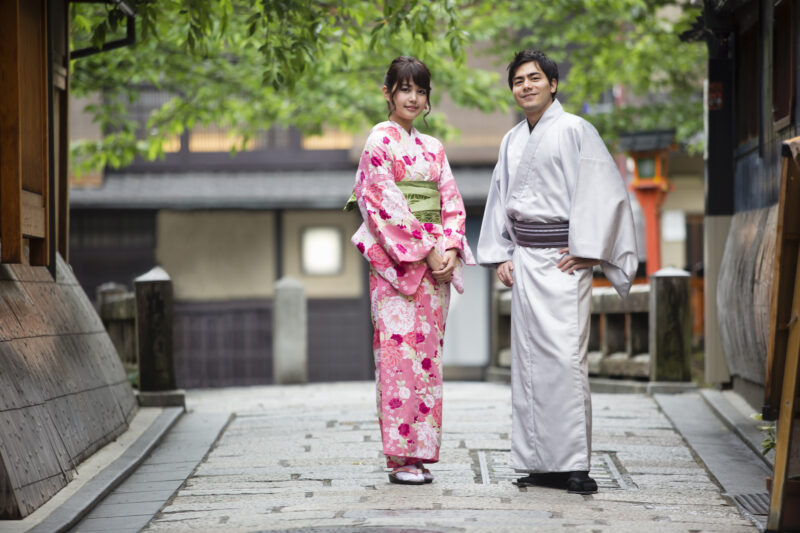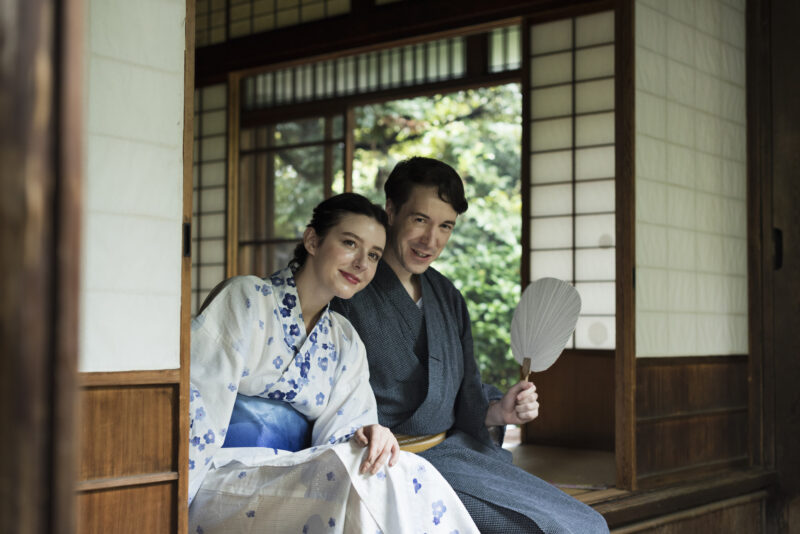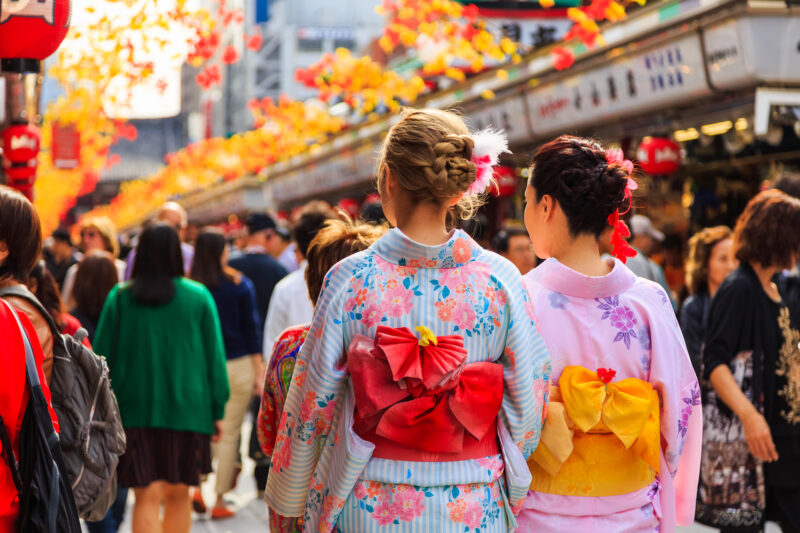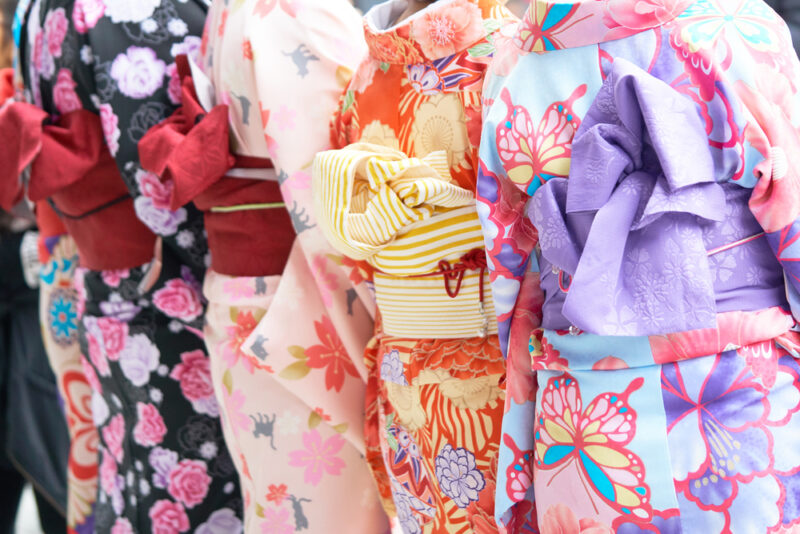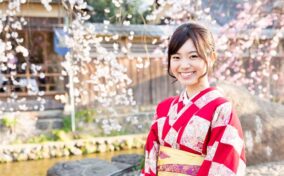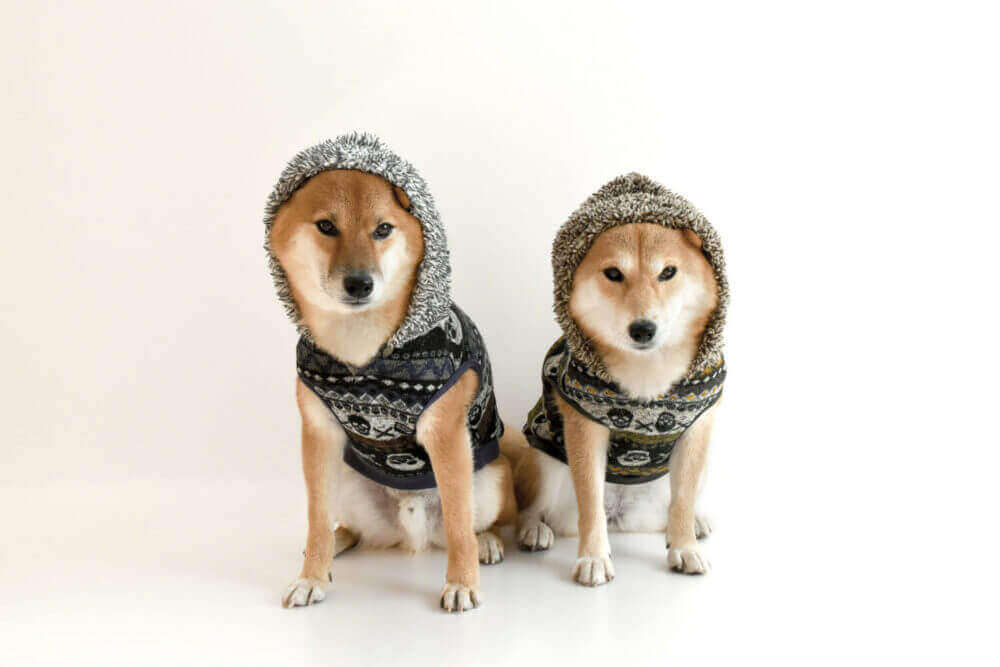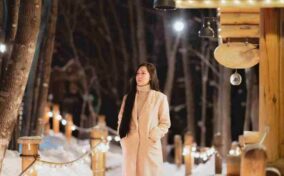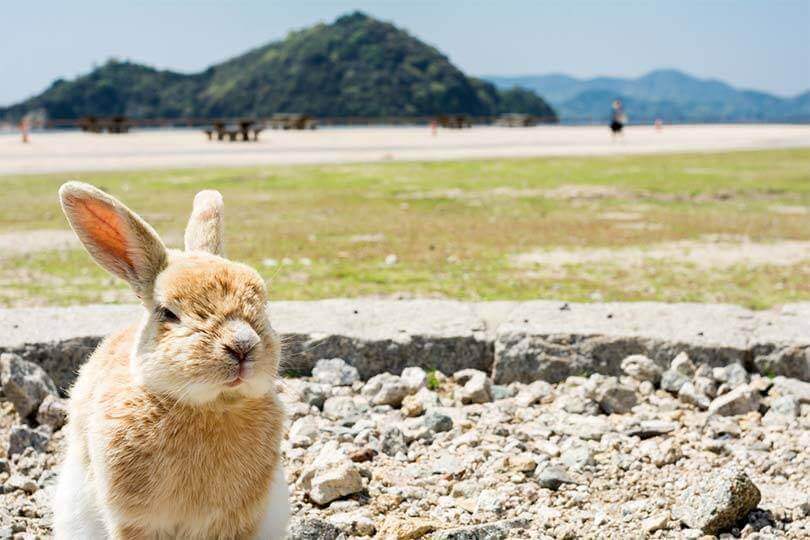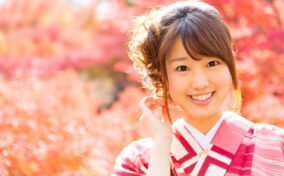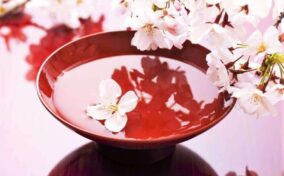We have summarized the basic knowledge about Japanese yukata, such as the history of yukata, the difference between yukata and kimono, how to enjoy yukata and how to wear yukata.
Yukata are popular not only at sightseeing spots such as Kyoto, but also at summer festivals and fireworks festivals. There are many colors and patterns in yukata fabrics, and it is fun just to look at them.
The more you know about yukata, the more you will enjoy wearing them!
Table of Contents
What is a yukata?
Today, Yukata is one of the fashionable items. It is a casual version of the kimono.
It is like a bathrobe made of rectangular pieces of cloth joined, wrapped around the body and tied with a sash (obi).
In recent years, it is popular not only among children and women, but also,among young men. This is because of the wide variety of patterns and colors, the versatility of arrangement with accessories such as hats, geta(Japanese clogs), and japanese toraditional fans, the affordable price, and the comfortable to ware.
We often wear them to fireworks festivals and summer festivals. Yukata are also popular for dinig at restaurants and hotels, theme parks such as amusement parks, and watching sports games in summer.
History of Yukata
The Chinese characters for yukata are “to bathe” and “Clothing”. Several hundred years ago, when the custom of taking a bath in the bathtub arose, people wore yukata to absorb moisture after the bath. It is the Japanese version of the bathrobe. Later, it was also used as a nightgown for summer nights.
Because of its history, some people thought it was bad manners to go out in a yukata and not wear it in the morning or during the day, but today there is no need to worry about it!
How is the yukata different from a kimono?
It is much more casual than a kimono. If a kimono is formal wear or going out, a yukata is a T-shirt or loungewear. Most are made of cotton or linen, so they are soft, cool, and comfortable.
When to wear a yukata
We usually wear them in July-August. But you can enjoy wearing a yukata in any season and at any time of the year.
Where casual attire such as T-shirts and jeans are allowed, there is no problem. In the past, dinner at hotels was not allowed, but now it is sometimes permitted. However, please remember that it is only a casual attire.
How to enjoy yukata
There are many colors and patterns in yukata fabrics and Obi(sashes). It is really fun just to choose one. And there are also many different ways to tie an obi.
Basically, yukata are worn barefoot with geta(japanese clogs) or zori sandals. Sometimes, Japanese version of socks called tabi are worn. Today, you can also wear regular socks and sneakers.
Various yukata and kimono experience programs, such as yukata and kimono rentals, dressing workshops, and photo shoots, are popular at major historical tourist destinations in Japan. If you are interested, please look for it on this linked site.
Yukata at Accommodations
At onsen ryokans and hotels
The yukata provided in ryokan and hotel rooms is loungewear. It is not a fashionable item. However, they are very comfortable after a hot spring bath. You can wear yukata inside. In the case of hot spring resorts, you can go out, go out to eat, take a walk, or go to another nearby ryokan for a dip in the hot springs. Many ryokans and hotels offer a choice of yukata sizes. If a yukata is too small or too large, you can make a request to the staff. The staff will also assist you in wearing.
Hotels (city center, etc.)
Basically, only indoors. In some hotels, yukata is acceptable in the hallways, public baths and breakfast. It is not good to go out of the lobby or outside. Please check with the hotel. It is only room clothes, so there is no help to wear.
How to put on a yukata in ryokans and hotels
- Put your arms through the sleeves
- Right side is down, left side is up. The right hand will be in the chest
- The obi(sash) should be tied around the waist for women and lower for men
Don’t worry about the details! As long as the obi doesn’t come undone, you are good !
Enjoy the summer days and the yukata experience.
Thank you for reading to the end.
Now, let’s plan to make your vacation in Japan the best experience ever!
